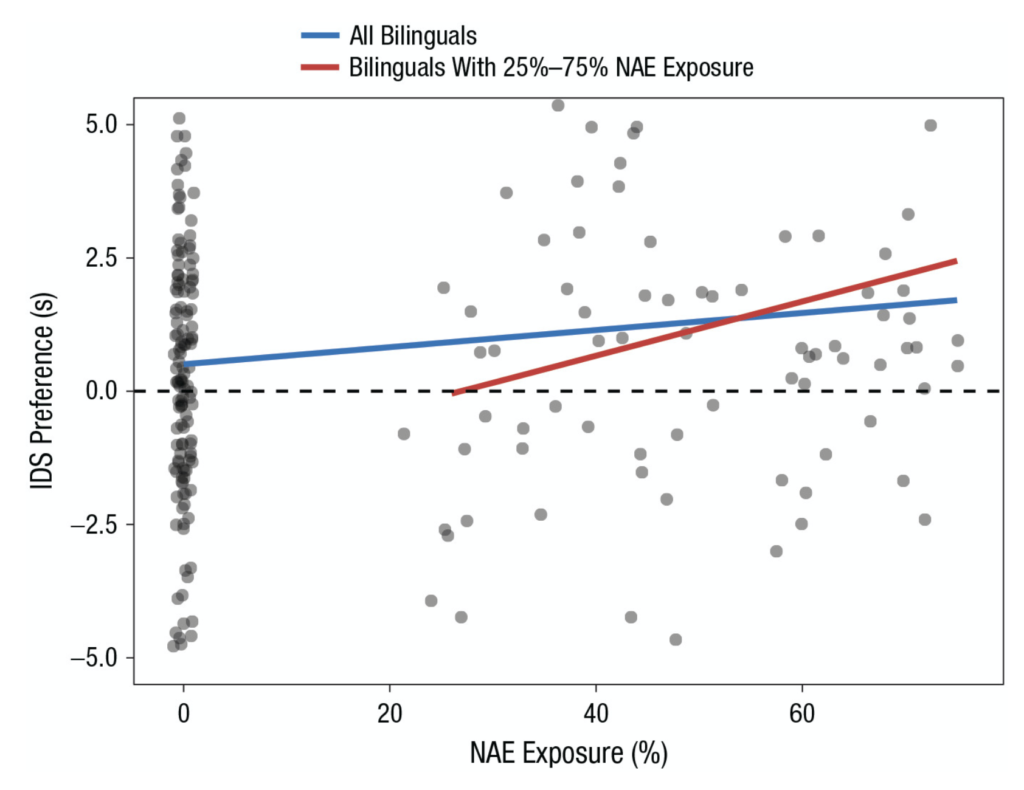
Do both monolingual and bilingual children prefer infant-directed speech?
IDS preference likely makes similar contributions to monolingual and bilingual development.
Byers-Heinlein, K., Tsui, A. S. M., Bergmann, C., Black, A. K., Brown, A., Carbajal, M. J., Durrant, S., Fennell, C. T., Fiévet, A.-C., Frank, M. C., Gampe, A., Gervain, J., Gonzalez-Gomez, N., Hamlin, J. K., Havron, N., Hernik, M., Kerr, S., Killam, H., Klassen, K., … Wermelinger, S. (2021). A Multilab Study of Bilingual Infants: Exploring the Preference for Infant-Directed Speech. Advances in Methods and Practices in Psychological Science, 4(1), 2515245920974622. https://doi.org/10.1177/2515245920974622
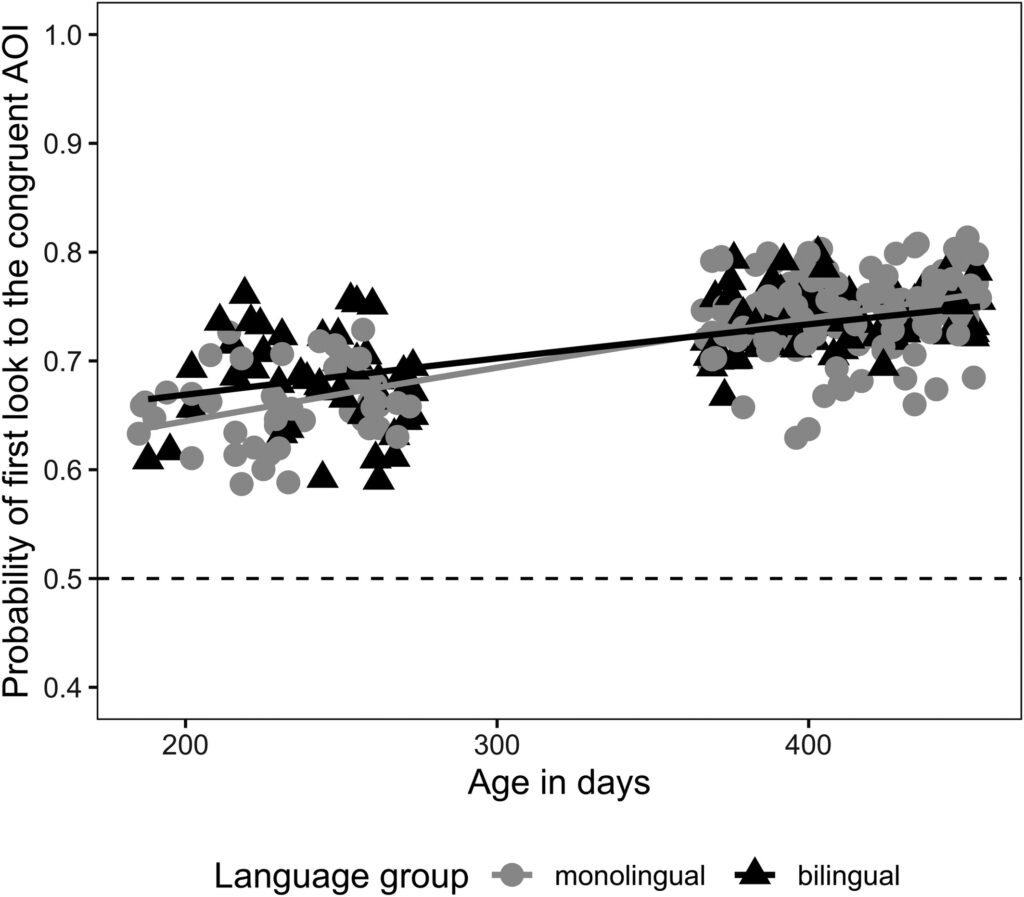
Is the ability to follow the direction of the eyes different for monolingual and bilingual children?
gaze sensitivity is a fundamental aspect of development that is robust to variation in language exposure.
Byers‐Heinlein, K., Tsui, R. K.-Y., Renswoude, D. van, Black, A. K., Barr, R., Brown, A., Colomer, M., Durrant, S., Gampe, A., Gonzalez‐Gomez, N., Hay, J. F., Hernik, M., Jartó, M., Kovács, Á. M., Laoun‐Rubenstein, A., Lew‐Williams, C., Liszkowski, U., Liu, L., Noble, C., … Singh, L. (2021). The development of gaze following in monolingual and bilingual infants: A multi-laboratory study. Infancy, 26(1), 4–38.
https://doi.org/10.1111/infa.12360
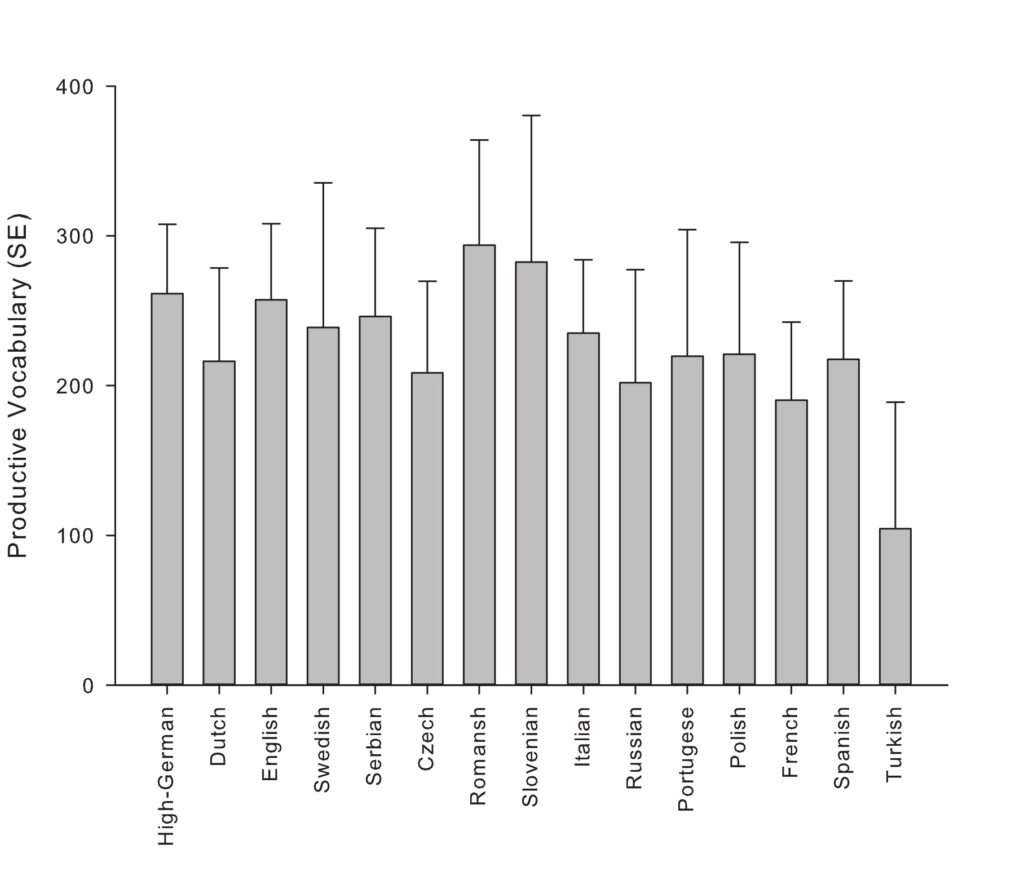
Does linguistic similarity affect early simultaneous bilingual language acquisition?
the more similar the two languages of bilinguals, the larger the children’s vocabulary.
Gampe, A., Quick, A., & Daum, M. M. (2021). Does linguistic similarity affect early simultaneous bilingual language acquisition? Journal of Language Contact, 13, 482-500.
https://doi.org/10.1163/19552629-13030001
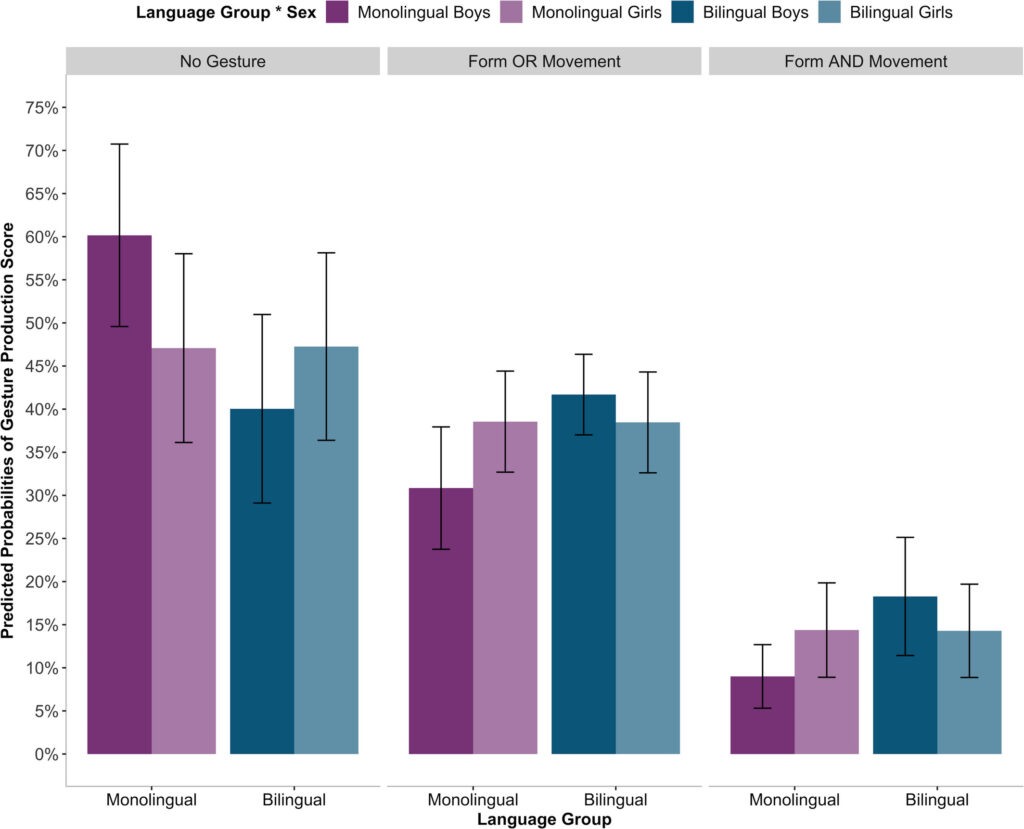
Do monolingual and bilingual children differ in their ability to understand and produce iconic gestures?
bilinguals produced more intelligible gestures than their monolingual peers but showed similar abilities to understand iconic gestures.
Wermelinger, S., Gampe, A., Helbling, N., & Daum, M. M. (2020). Do you understand what I want to tell you? Early sensitivity in bilinguals’ iconic gesture perception and production. Developmental Science, 23(5), e12943.
https://doi.org/10.1111/desc.12943
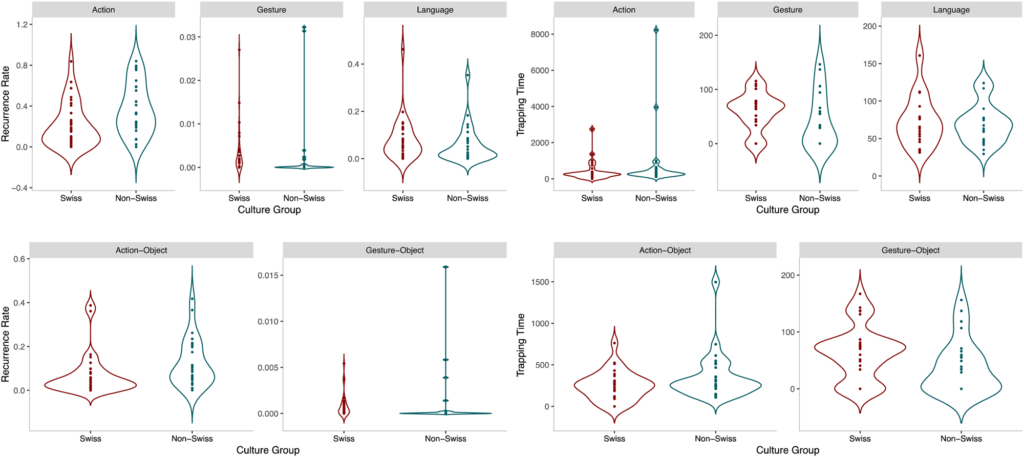
Do parents of monolingual and bilingual children show different interactional characteristics in joint interactions?
The rate and duration of coordination differed across infants with different cultural backgrounds but not between monolingual and bilingual infants.
Gampe, A., Hartmann, L., & Daum, M. M. (2020). Dynamic interaction patterns of monolingual and bilingual infants with their parents. Journal of Child Language, 47(1), 45–63. https://doi.org/10.1017/S0305000919000631
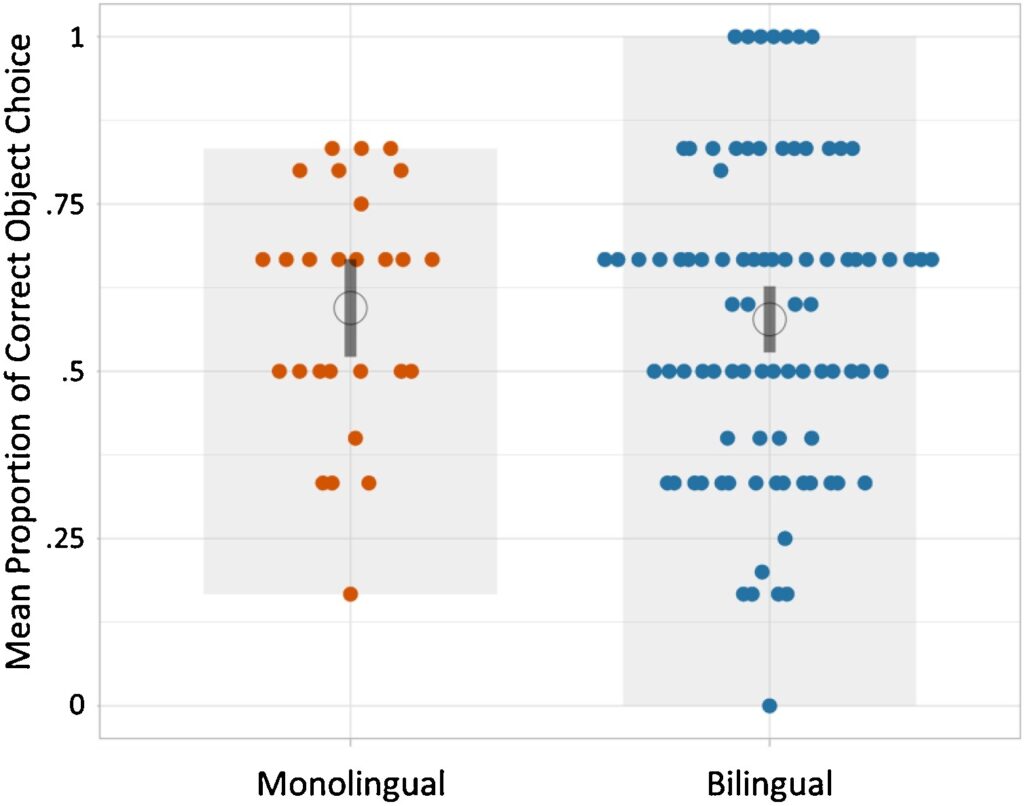
Is understanding indirect communication easier for bilingual children?
monolingual and bilingual children did not differ in their understanding of the speaker’s indirectly communicated intentions.
Schulze, C., Endesfelder Quick, A., Gampe, A., & Daum, M. M. (2020). Understanding verbal indirect communication in monolingual and bilingual children. Cognitive Development, 55, 100912.
https://doi.org/10.1016/j.cogdev.2020.100912
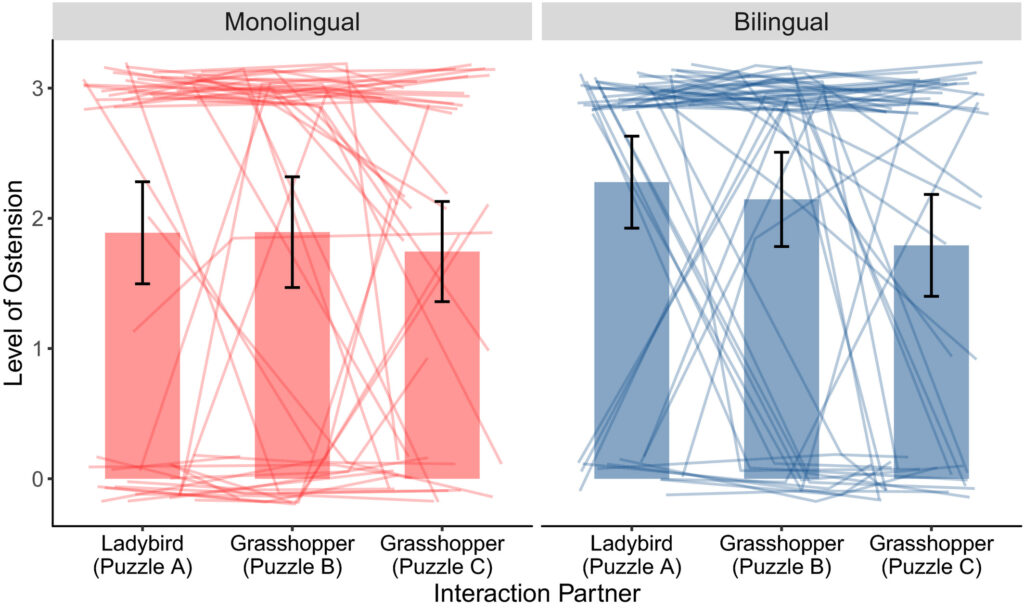
Are monolingual and bilingual children able to adapt their communication to the needs of their communication partners?
Monolinguals and bilinguals were equally helpful and informative But only bilingual children adapted their level of ostension between Partners.
Gampe, A., Wermelinger, S., & Daum, M. M. (2019). Bilingual children adapt to the needs of their communication partners, monolinguals do not. Child Development, 90(1), 98–107.
https://doi.org/10.1111/cdev.13190
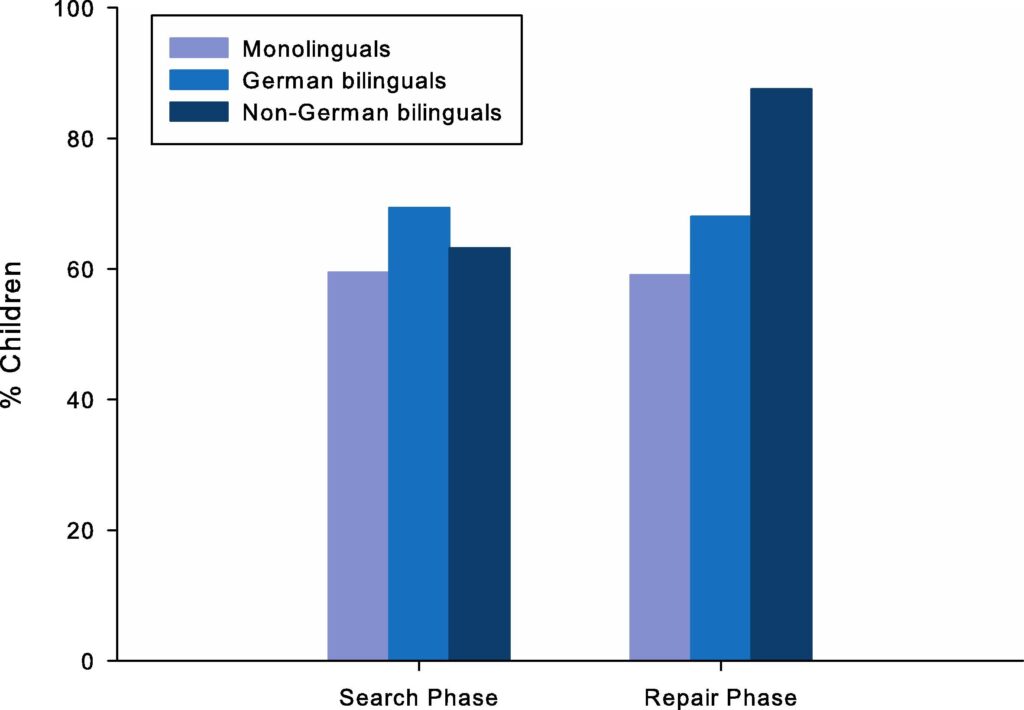
What do 2-year-olds do when they are misunderstood by the interaction partner?
bilinguals were more likely to repair the misunderstanding compared with both monolingual children and Bidialectal children, showing that unique experience with interpersonal communication and its difficulties influences communicative skills.
Wermelinger, S., Gampe, A., & Daum, M. M. (2017). Bilingual toddlers have advanced abilities to repair communication failure. Journal of Experimental Child Psychology, 155, 84–94. https://doi.org/10.1016/j.jecp.2016.11.005